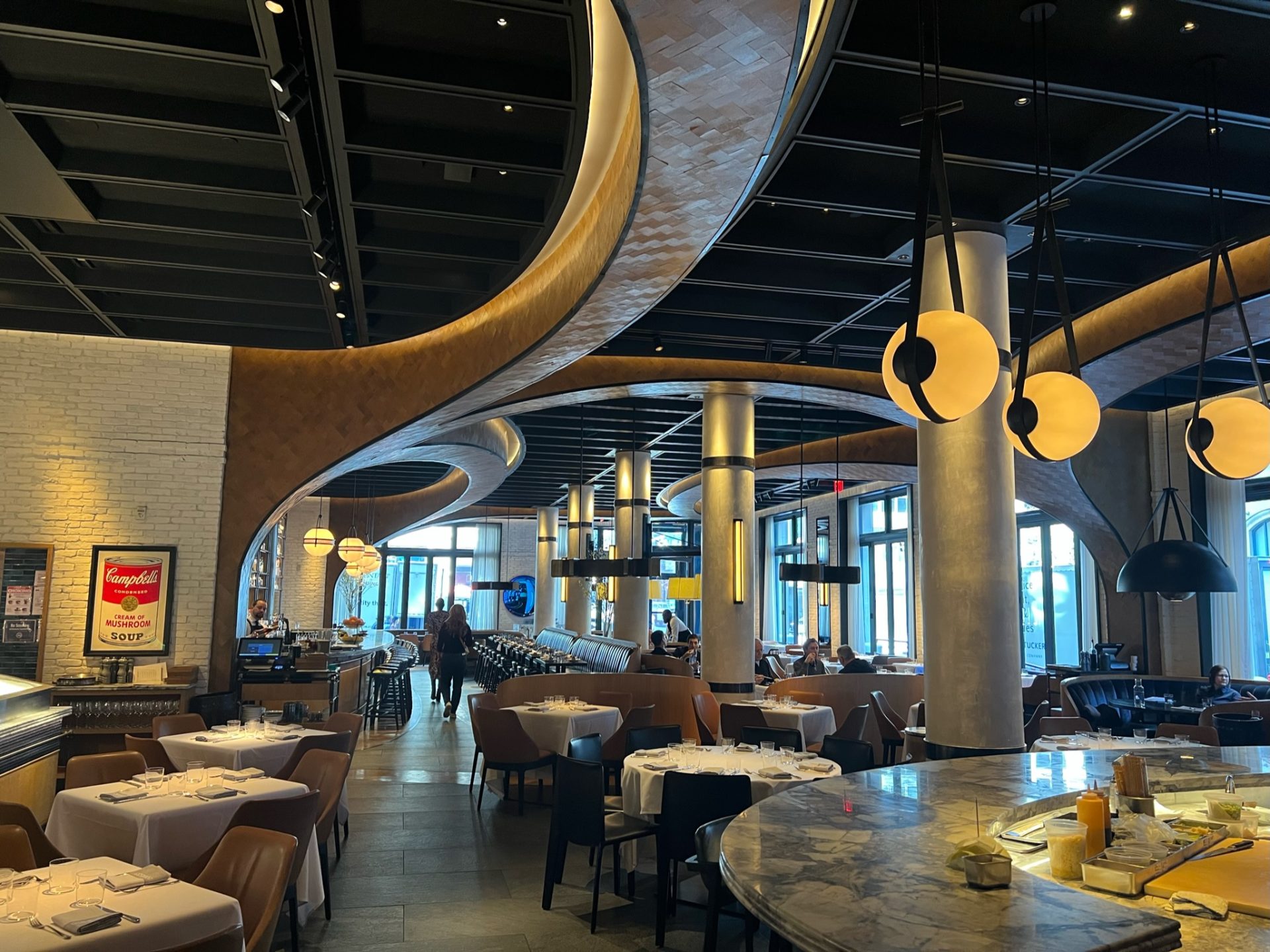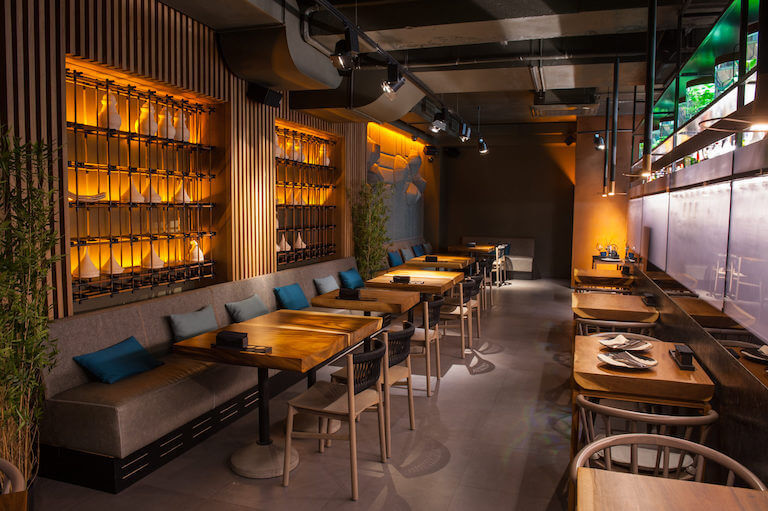Fine Dining Experience Islamabad: Delight In Lavish Cooking Pleasures
Fine Dining Experience Islamabad: Delight In Lavish Cooking Pleasures
Blog Article
Savor Authentic Oriental Food With a Pan-Asian Twist for a Culinary Journey
Starting a cooking trip through authentic Oriental food, enhanced with a Pan-Asian spin, supplies a distinct possibility to discover the rich tapestry of flavors that specify the area's diverse culinary practices. This experience invites you to savor the elegant equilibrium of tastes-- pleasant, salted, spicy, and sour-- balanced by aromatic natural herbs and spices. Picture the cutting-edge fusion of Thai curry and ramen or the unforeseen pleasure of sushi burritos. As you consider these attracting recipes, take into consideration the social stories and historical influences that shape them, each bite providing a tale waiting to be uncovered.

Discovering Pan-Asian Tastes
In the realm of global gastronomy, Pan-Asian food sticks out for its remarkable diversity and the unified interaction of tastes from various Oriental societies. This culinary method commemorates the special active ingredients and abundant customs found throughout the continent, creating a tapestry of tastes that is both interesting and gratifying. Trick to Pan-Asian cuisine is its capacity to balance different flavors-- wonderful, salty, spicy, and sour-- while highlighting the quality and top quality of each active ingredient.
From the umami-rich soy sauce of Japan to the fiery chili peppers of Thailand, Pan-Asian food supplies a considerable scheme of flavors. These elements are frequently incorporated in creative means, improving dishes with layers of intricacy. For circumstances, making use of great smelling herbs such as lemongrass and cilantro, common in Vietnamese and Thai cuisine, includes a refreshing illumination to meals, while the incorporation of coconut milk delivers a velvety, rich texture.
The focus on fresh produce and fragrant spices makes sure that each meal is not only a banquet for the palate but additionally for the detects. Pan-Asian food welcomes restaurants to start a culinary trip, discovering the substantial and differed landscapes of Eastern gastronomy with every bite.
Fusion Recipes to Try
While Pan-Asian food is celebrated for its typical tastes, the modern culinary landscape is significantly embracing blend recipes that blend these traditional components with impacts from various other areas. This innovative technique not just honors the rich heritage of Eastern cookeries yet also introduces unique preference experiences that attract modern tastes.
An archetype of such a combination recipe is the Korean-Mexican taco, where marinated bulgogi beef is covered in a warm tortilla, topped with kimchi and a hot gochujang-infused salsa. This mix weds the vibrant, mouthwatering flavors of Korea with the vibrant, fresh elements of Mexican cuisine. Likewise, sushi burritos have actually gained appeal, integrating the delicate virtuosity of Japanese sushi with the passionate, hand-held ease of a burrito, typically featuring blend ingredients like tempura shrimp and avocado with a drizzle of wasabi mayo.
One more significant recipe is Thai curry ramen, which infuses the creamy, aromatic flavors of Thai curry into the calming broth of typical Japanese ramen, creating an unified mix that entices the detects. These blend meals extend beyond simple uniqueness; they stand for a cooking dialogue between cultures, encouraging expedition and development on the planet of Pan-Asian food.
Vital Ingredients and Spices
To really appreciate Pan-Asian cuisine, one should understand the important active ingredients and spices that form its structure. This diverse culinary style draws from a rich tapestry of Oriental practices, utilizing an unified mix of flavors and appearances. Trick active ingredients consist of soy sauce, fish sauce, and oyster sauce, which pass on a tasty umami depth important to Asian meals. Corresponding to these are rice vinegar and mirin, providing a fragile acidity and sweetness.
Aromatic aspects are essential, with garlic, ginger, and lemongrass being common across numerous Pan-Asian recipes. These active ingredients offer a fragrant base that enhances the complexity of tastes. Flavors such as celebrity anise, cardamom, and cinnamon introduce warmth and character, echoing influences from areas like China and India.

Food Preparation Strategies and Tips
Understanding the art of Pan-Asian cuisine calls for experience with its distinctive cooking strategies, each adding to the dynamic tapestry of flavors this culinary custom is commemorated for. Central to these approaches is the stir-fry, a fast cooking strategy that preserves the nutritional stability and dazzling shades of components. Using a wok, the stir-fry approach enables even warmth circulation, important for attaining the important source characteristic structure and taste equilibrium of Pan-Asian meals.
One more fundamental method is steaming, particularly prevalent in Chinese cuisine. This mild approach preserves the natural tastes and nutrients of active ingredients, making it perfect for seafood and vegetables. Dumplings, a cherished staple, frequently gain from steaming, resulting in soft, succulent textures.
Grilling, also important, passes on smoky midsts to meals such as Korean bulgogi or Japanese yakitori (pan asian restaurant Islamabad). This strategy typically entails marinading components, enabling tastes to pass through deeply prior to cooking over an open fire or warmer
Lastly, mastering the art of balancing flavors-- pleasant, sour, salted, bitter, and umami-- is vital. Effectively layering these aspects can elevate a meal from common to amazing, providing a complicated and pleasing culinary experience that symbolizes the significance of Pan-Asian cuisine.
Eating Experiences Worldwide
Throughout the world, Pan-Asian cuisine provides an unequaled eating experience, celebrated for its abundant tapestry of tastes and dynamic discussions. This culinary sensation has actually gone beyond cultural boundaries, catching the hearts and tastes of food enthusiasts worldwide. In cosmopolitan cities like New York, London, and Sydney, Pan-Asian dining establishments offer as melting pots where cooking traditions from Thailand, Japan, China, and beyond assemble, giving restaurants with an eclectic mix of dishes that highlight the region's diversity.
The global charm of Pan-Asian food lies in its capability to provide both credibility and advancement. Chefs skillfully marry typical components such as lemongrass, soy sauce, and miso with modern strategies, causing recipes that are both familiar and refreshingly brand-new. This blend enables restaurants to embark on a cooking trip that values heritage while welcoming modernity.
Moreover, eating experiences are raised via thoughtfully made environments that reflect the ethos of Pan-Asian aesthetics. From minimalist Japanese-inspired interiors to dynamic Thai-themed rooms, each dining establishment supplies a special atmosphere that matches the culinary offerings. Consequently, clients are not just eating a dish yet partaking in a cultural experience, making Pan-Asian dining an absolutely global phenomenon.
Final Thought
The exploration of Pan-Asian cuisine offers an extensive understanding of the complex interplay of flavors and cooking traditions throughout Asia. By embracing fusion recipes such as waterfront restaurants near me Thai curry ramen and sushi burritos, the culinary trip not just highlights the adaptability of traditional ingredients but also showcases cutting-edge contemporary strategies. This gastronomic experience, improved by cooking approaches and crucial seasonings, provides a special possibility to value the multiculturalism and culinary creativity that define Pan-Asian cuisine on an international range.
Getting started on a cooking trip through genuine Eastern food, enhanced with a Pan-Asian spin, supplies a special chance to explore the abundant tapestry of tastes that define the area's varied cooking practices.In the world of global gastronomy, Pan-Asian cuisine stands out for its impressive variety and the unified interaction of tastes from various Eastern societies. Key to Pan-Asian cuisine is this post its capability to stabilize contrasting tastes-- wonderful, salty, spicy, and sour-- while highlighting the freshness and quality of each ingredient.

Report this page